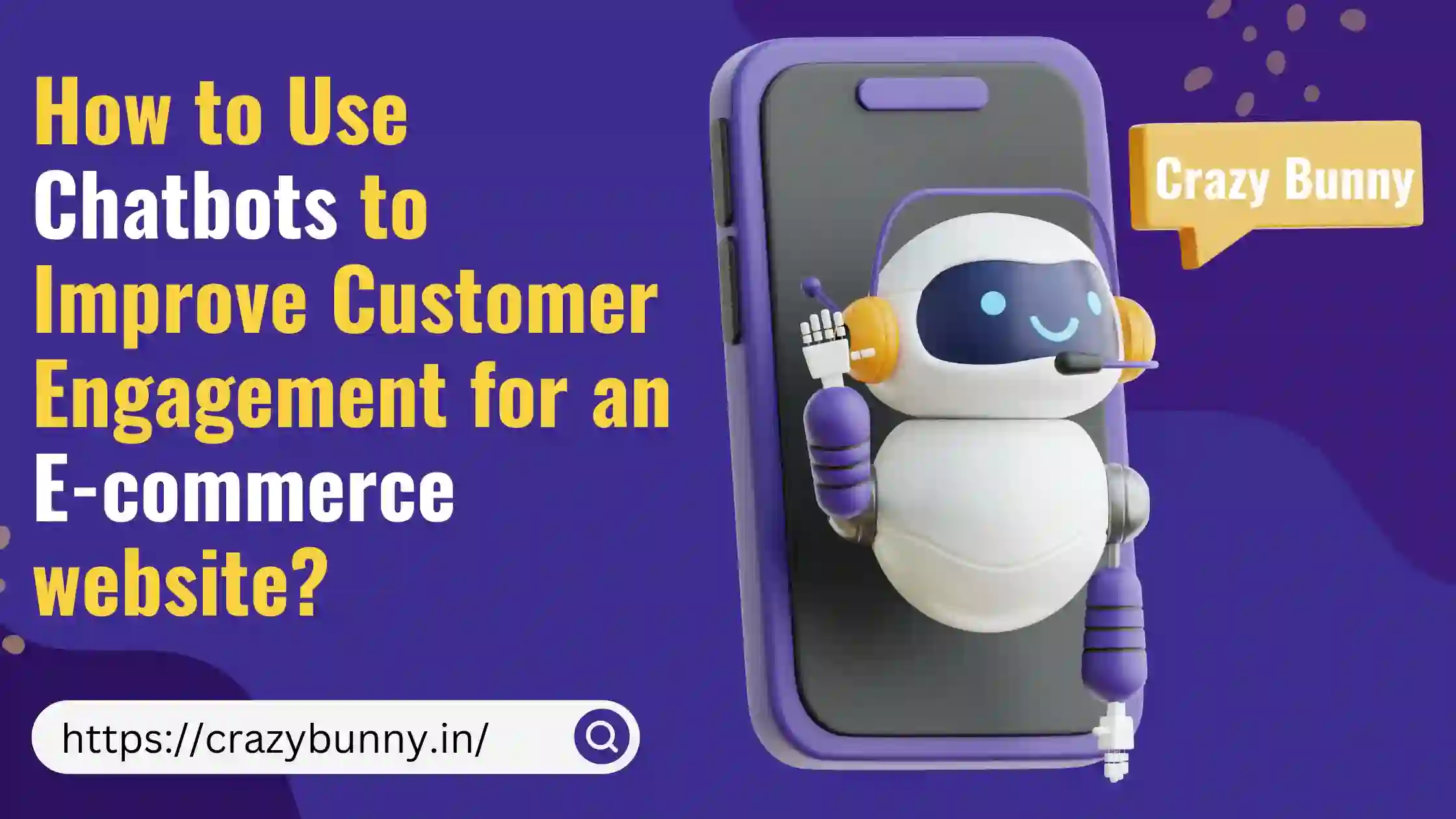Use of Chatbots to improve Customer Engagement for E Commerce Website
In today’s competitive e-commerce landscape, customer engagement is the lifeblood of success. It’s no longer enough to simply have a well-designed website with a vast product selection. The key lies in creating a dynamic and interactive shopping experience that fosters loyalty and drives conversions. This is where chatbots, powered by artificial intelligence (AI), step in as a game-changer.
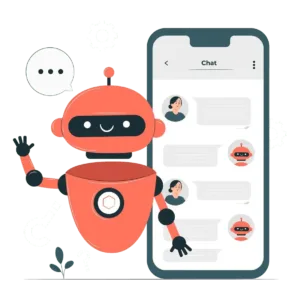
Chatbots are software applications designed to simulate human conversation through text or voice interactions. They are powered by artificial intelligence (AI) and natural language processing (NLP) technologies, enabling them to understand and respond to user queries in a conversational manner. Chatbots can be broadly categorized into two types:
Rule-Based Chatbots: These chatbots operate based on predefined rules and responses. They follow a scripted path to answer specific questions and are limited to the scenarios for which they have been programmed. Rule-based chatbots are suitable for simple tasks and straightforward customer interactions.
AI-Powered Chatbots: Also known as smart chatbots, these use machine learning and NLP to understand and respond to more complex queries. They can learn from past interactions, improve their responses over time, and handle a wide range of customer inquiries. AI-powered chatbots are ideal for providing personalized experiences and handling intricate customer support tasks.
Evolution of Chatbots
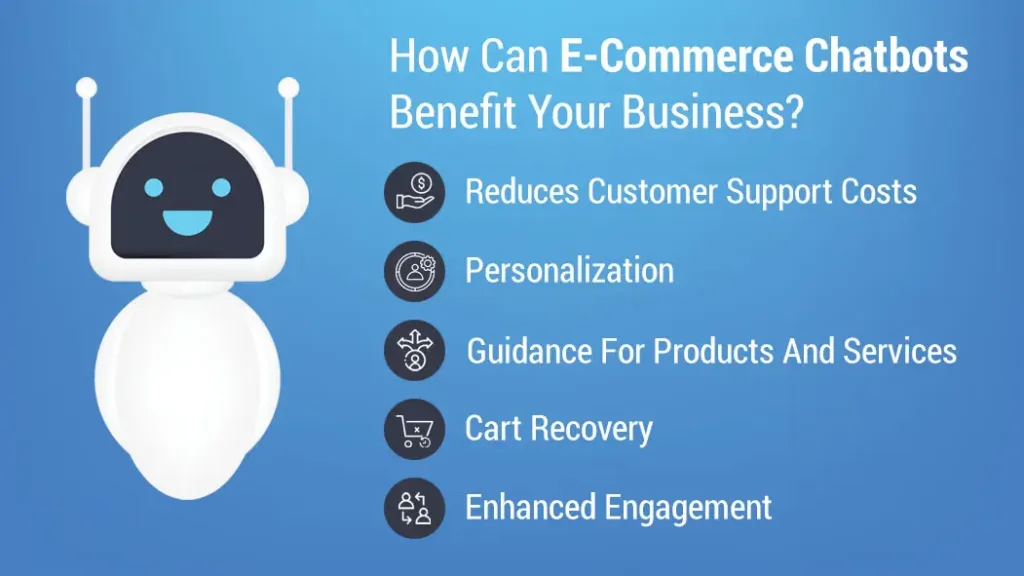
The evolution of chatbots can be traced back to the early days of artificial intelligence research. The first chatbot, ELIZA, was developed in the 1960s and was designed to simulate a psychotherapist by responding to user inputs with scripted responses. Since then, chatbots have come a long way, evolving through several stages:
- Rule-Based Systems: Early chatbots were simple rule-based systems that followed predefined scripts. They were limited in their capabilities and could only handle basic queries.
- Natural Language Processing: Advances in NLP allowed chatbots to understand and process human language more effectively. This enabled them to handle a wider range of queries and provide more accurate responses.
- Machine Learning: The integration of machine learning allowed chatbots to learn from interactions and improve their responses over time. This made them more versatile and capable of handling complex tasks.
- AI-Powered Chatbots: Modern chatbots leverage AI, NLP, and machine learning to provide highly personalized and context-aware interactions. They can handle sophisticated customer support tasks, offer product recommendations, and engage with customers in meaningful ways.
What are Chatbots and How Can They Benefit Your E-commerce Business?
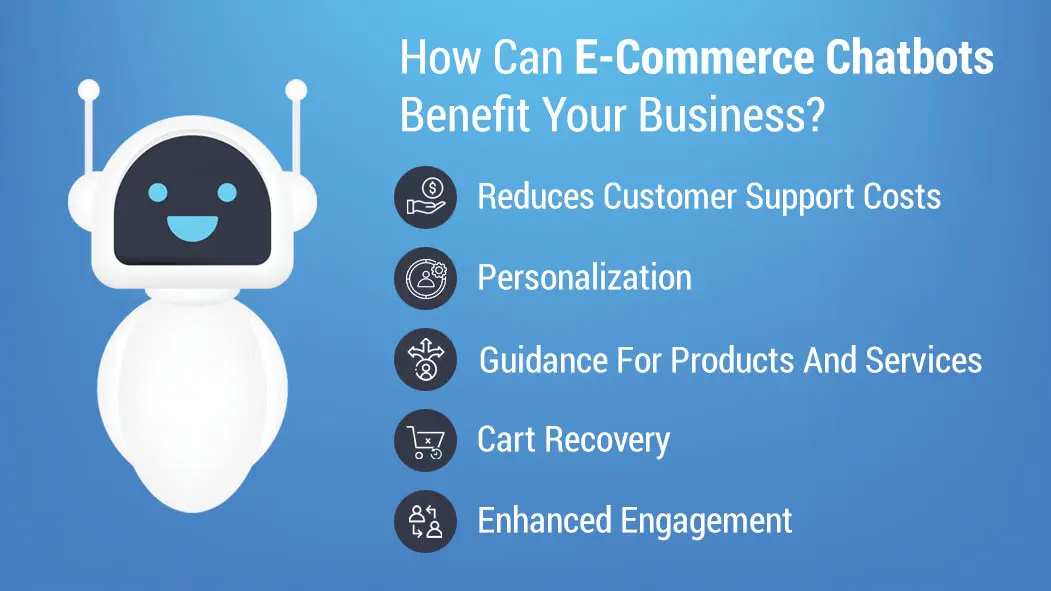
Chatbots are virtual assistants that simulate conversation with users through text or voice interactions. Integrated seamlessly into your e-commerce website, chatbots can provide a multitude of benefits, including:
- 24/7 Customer Support: Chatbots offer round-the-clock availability, answering customer queries and resolving issues promptly, even outside of business hours. This not only enhances customer satisfaction but also reduces the burden on your human support team.
- Personalized Product Recommendations: Leveraging customer data and browsing history, chatbots can recommend products tailored to individual needs and preferences. This personalized touch fosters a more engaging shopping experience and increases the likelihood of conversions.
- Streamlined Sales Process: Chatbots can guide customers through the buying journey, answering product questions, providing size and fit recommendations, and facilitating the checkout process. This streamlined experience minimizes friction and encourages customers to complete purchases.
- Increased Lead Generation: Chatbots can engage with website visitors, capturing valuable contact information and qualifying leads for further marketing efforts. This allows you to personalize marketing campaigns and target the right audience with the most relevant offers.
- Improved Brand Image: Chatbots can project a friendly and helpful brand personality, fostering trust and rapport with customers. By offering immediate assistance and addressing concerns efficiently, chatbots can significantly enhance your brand image.
Benefits of Chatbots for E-commerce
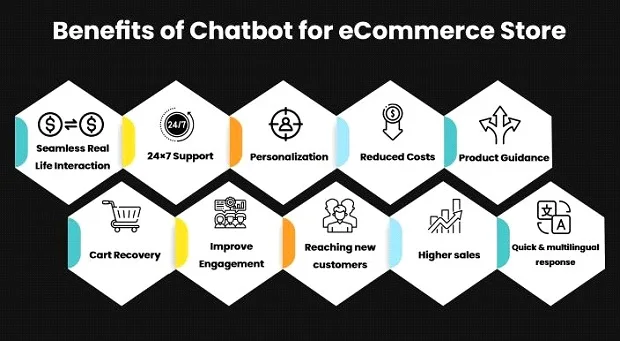
Enhanced Customer Support
One of the primary benefits of using chatbots in e-commerce is the enhancement of customer support. Chatbots can provide instant responses to customer inquiries, reducing wait times and improving overall customer satisfaction. They can handle a wide range of support tasks, from answering frequently asked questions to resolving order issues. By providing timely and accurate support, chatbots help build trust and loyalty among customers.
Increased Sales and Conversions
Chatbots can significantly boost sales and conversions by guiding customers through their shopping journey. They can offer personalized product recommendations based on user preferences and browsing history, helping customers find the right products. Additionally, chatbots can assist with upselling and cross-selling, suggesting complementary products that enhance the customer’s shopping experience.
24/7 Availability
Unlike human customer service representatives, chatbots are available 24/7. This round-the-clock availability ensures that customers can get assistance whenever they need it, regardless of time zones or business hours. This is particularly important for e-commerce businesses with a global customer base, as it allows them to provide continuous support and engagement.
Personalized Shopping Experiences
Personalization is a key driver of customer engagement and satisfaction. Chatbots can collect and analyze customer data to offer personalized recommendations, promotions, and content. By tailoring interactions to individual preferences, chatbots create a more engaging and relevant shopping experience, leading to higher customer retention and loyalty.
Cost Efficiency
Implementing chatbots can lead to significant cost savings for e-commerce businesses. Chatbots can handle a large volume of inquiries simultaneously, reducing the need for a large customer support team. This allows businesses to allocate resources more efficiently and focus on high-value tasks. Additionally, chatbots can automate repetitive tasks, freeing up human agents to handle more complex and critical issues.
Implementing Chatbots on Your E-commerce Website

Choosing the Right Chatbot Platform
Selecting the right chatbot platform is crucial for successful implementation. There are several factors to consider when choosing a platform:
- Features and Capabilities: Ensure that the platform offers the necessary features, such as NLP, machine learning, and integration with e-commerce platforms.
- Ease of Use: The platform should be user-friendly and allow for easy customization and management of chatbot interactions.
- Scalability: Choose a platform that can scale with your business as it grows, handling increasing volumes of interactions.
- Analytics and Reporting: Look for a platform that provides detailed analytics and reporting capabilities to measure the performance and impact of your chatbot.
Designing the Chatbot Experience

Designing a seamless and engaging chatbot experience involves several key steps:
- Define Objectives: Clearly define the objectives and goals of your chatbot. Determine the specific tasks and interactions it will handle, such as customer support, product recommendations, or order tracking.
- Create Conversational Flows: Design conversational flows that guide users through interactions in a natural and intuitive manner. Use branching logic to handle different user inputs and scenarios.
- Personalize Interactions: Leverage customer data to personalize interactions. Use the customer’s name, provide tailored recommendations, and offer personalized promotions.
- Test and Iterate: Continuously test and refine your chatbot to ensure it meets user needs and expectations. Gather feedback from users and make improvements based on their input.
Integrating with E-commerce Platforms

Integration with e-commerce platforms is essential for a seamless chatbot experience. Ensure that your chatbot can access and interact with your e-commerce platform’s data, such as product information, order details, and customer profiles. This allows the chatbot to provide accurate and relevant information to users. Popular e-commerce platforms like Shopify, WooCommerce, and Magento offer integrations with various chatbot platforms, making the process easier.
Setting Up Chatbot Analytics
Analytics are crucial for measuring the performance and impact of your chatbot. Set up tracking and reporting to monitor key metrics, such as:
- User Engagement: Track the number of interactions, user sessions, and engagement rates.
- Response Accuracy: Measure the accuracy of the chatbot’s responses and identify areas for improvement.
- Conversion Rates: Monitor the impact of the chatbot on sales and conversion rates.
- Customer Satisfaction: Collect feedback from users to gauge their satisfaction with the chatbot experience.
Strategies for Using Chatbots to Improve Customer Engagement
Proactive Customer Support
One effective strategy for using chatbots to improve customer engagement is to offer proactive customer support. Instead of waiting for customers to initiate contact, chatbots can proactively reach out to users who may need assistance. For example, if a customer is browsing a product page for an extended period, the chatbot can offer help with product information or answer any questions they may have. This proactive approach can prevent frustration and enhance the overall shopping experience.
Personalized Recommendations
Personalized recommendations are a powerful way to engage customers and drive sales. Chatbots can analyze user data, such as browsing history and past purchases, to provide tailored product recommendations. By offering relevant suggestions, chatbots help customers discover products that match their preferences and needs, increasing the likelihood of a purchase.
Abandoned Cart Recovery
Abandoned carts are a common challenge in e-commerce. Chatbots can help recover abandoned carts by sending personalized reminders and incentives to customers who have left items in their carts. For example, a chatbot can send a message saying, “We noticed you left some items in your cart. Would you like to complete your purchase? Here’s a 10% discount to help you out!” This targeted approach can encourage customers to complete their purchases, reducing cart abandonment rates.
Order Tracking and Updates
Providing real-time order tracking and updates is another way chatbots can enhance customer engagement. Customers often want to know the status of their orders, and chatbots can provide this information instantly. By integrating with the e-commerce platform, chatbots can access order details and provide updates on shipping, delivery, and any delays. This transparency builds trust and keeps customers informed throughout the purchase journey.
Post-Purchase Support
Post-purchase support is crucial for maintaining customer satisfaction and loyalty. Chatbots can handle post-purchase inquiries, such as returns, exchanges, and warranty information. By providing prompt and efficient support, chatbots ensure that customers have a positive experience even after their purchase is complete. This can lead to repeat business and positive word-of-mouth referrals.
Interactive Marketing Campaigns
Interactive marketing campaigns can be a fun and engaging way to connect with customers. Chatbots can be used to run quizzes, contests, and promotions that encourage user participation. For example, a chatbot can guide users through a product quiz to help them find the perfect item based on their preferences. By making marketing campaigns interactive, chatbots create a more engaging and memorable experience for customers.
Case Studies: Successful Chatbot Implementations
Sephora

Sephora, a leading beauty retailer, has successfully integrated chatbots into its customer engagement strategy. Sephora’s chatbot, available on Facebook Messenger, offers personalized beauty advice, product recommendations, and booking assistance for in-store services. The chatbot uses AI to understand customer preferences and provide tailored recommendations. This has not only enhanced the customer experience but also increased sales and customer loyalty.
H&M

H&M, a global fashion retailer, uses a chatbot on the Kik messaging platform to engage with customers. The chatbot helps users find outfits based on their style preferences and offers personalized fashion advice. By providing a virtual shopping assistant, H&M’s chatbot has improved customer engagement and made the shopping experience more enjoyable.
ASOS

ASOS, an online fashion retailer, uses a chatbot called “Enki” to assist customers with shopping and support. Enki helps users find products, track orders, and answer frequently asked questions. The chatbot also offers style advice and personalized recommendations. ASOS’s chatbot has streamlined customer support and enhanced the overall shopping experience.
eBay

eBay’s chatbot, known as “ShopBot,” assists users in finding products and making purchases. ShopBot engages users in a conversational manner, asking questions to understand their preferences and provide relevant product suggestions. The chatbot also helps users track orders and resolve issues. eBay’s ShopBot has improved customer engagement and simplified the shopping process.
Measuring the Impact of Chatbots on Customer Engagement
Key Performance Indicators (KPIs)
To measure the impact of chatbots on customer engagement, it’s essential to track key performance indicators (KPIs). Some important KPIs include:
- User Engagement: Track the number of interactions, user sessions, and engagement rates to understand how effectively the chatbot is engaging customers.
- Response Accuracy: Measure the accuracy of the chatbot’s responses to ensure it is providing correct and helpful information.
- Conversion Rates: Monitor the impact of the chatbot on sales and conversion rates to determine its effectiveness in driving purchases.
- Customer Satisfaction: Collect feedback from users to gauge their satisfaction with the chatbot experience. This can be done through surveys, ratings, and reviews.
- Resolution Time: Measure the time it takes for the chatbot to resolve customer inquiries and issues. Faster resolution times indicate a more efficient support process.
Analyzing Customer Feedback

Customer feedback is invaluable for improving chatbot performance and enhancing customer engagement. Regularly collect and analyze feedback to identify areas for improvement. This can include user comments, ratings, and suggestions. Use this feedback to make necessary adjustments to the chatbot’s responses, conversational flows, and features.
Continuous Improvement
Continuous improvement is key to maintaining a high-performing chatbot. Regularly update and refine the chatbot based on performance metrics and customer feedback. Implement new features and capabilities to keep the chatbot relevant and effective. By continuously improving the chatbot, businesses can ensure that it remains a valuable tool for enhancing customer engagement.
Future Trends in E-commerce Chatbots

AI and Machine Learning Advancements
Advancements in AI and machine learning will continue to enhance the capabilities of chatbots. These technologies will enable chatbots to understand and respond to more complex queries, provide more accurate recommendations, and deliver highly personalized experiences. As AI and machine learning evolve, chatbots will become even more effective in engaging customers and driving business growth.
Voice-Activated Chatbots
Voice-activated chatbots are becoming increasingly popular, driven by the rise of voice assistants like Amazon Alexa, Google Assistant, and Apple Siri. These chatbots allow users to interact through voice commands, making the experience more natural and convenient. Voice-activated chatbots can enhance customer engagement by providing hands-free assistance and personalized interactions.
Omnichannel Integration
Omnichannel integration is a growing trend in e-commerce, and chatbots play a crucial role in this strategy. By integrating chatbots across multiple channels, such as websites, social media, and messaging apps, businesses can provide a seamless and consistent customer experience. Omnichannel chatbots ensure that customers receive support and engagement regardless of the platform they use.
Conclusion
Chatbots have emerged as a powerful tool for improving customer engagement in the e-commerce industry. By providing instant support, personalized recommendations, and interactive experiences, chatbots enhance the overall shopping journey and drive customer satisfaction. Implementing chatbots on your e-commerce website can lead to increased sales, reduced costs, and higher customer loyalty.
As technology continues to advance, the capabilities of chatbots will only grow, offering new opportunities for businesses to engage with their customers. By staying informed about the latest trends and continuously improving their chatbot strategies, e-commerce businesses can leverage this technology to achieve lasting success in the digital marketplace.

